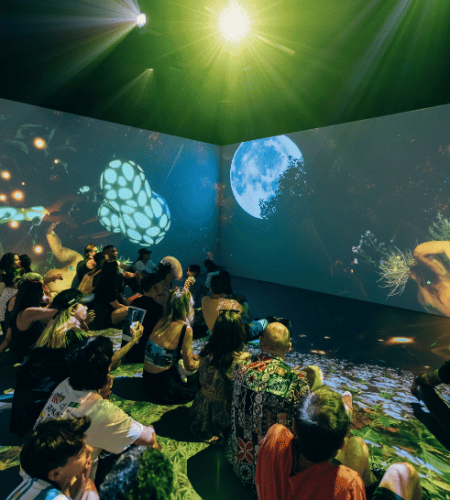Artificial Intelligence (AI) is no longer a distant dream but a dynamic force reshaping various aspects of our lives. One of the most fascinating areas where AI is making waves is the creative industries. From music and writing to visual arts, AI is transforming how content is created, produced, and consumed. This article explores the profound impact of AI on these fields, highlighting its revolutionary potential while addressing the controversies and challenges it brings.
AI in Music: Composing and Performing
AI’s influence on music is both innovative and transformative. Algorithms like OpenAI’s MuseNet and Google’s Magenta are capable of analyzing extensive musical data to generate original compositions. These AI systems can craft music across a wide range of genres, blending styles in ways that were previously unimaginable. For musicians, AI offers a new level of collaboration, suggesting melodies, chord progressions, and even lyrics, thereby expanding the creative toolkit.
In live performances, AI-driven tools are enhancing the concert experience. Imagine AI algorithms improvising alongside musicians in real time, adapting to their performance and creating dynamic, interactive shows. This integration of AI not only showcases technological marvels but also opens up exciting new possibilities for live music.

(ANDREAS RENTZ—GETTY IMAGES)
AI in Writing: Generating and Editing Content
The impact of AI on writing is equally profound. Natural Language Processing (NLP) models, such as OpenAI’s GPT-4, are capable of generating text that is coherent and contextually relevant. These models can produce everything from news articles to poetry, often mimicking the style of established writers. This technology is a game-changer for content creators, providing a tool that can generate ideas, drafts, and polished text.
AI also plays a crucial role in editing and proofreading. Grammar and style checkers powered by AI can enhance the readability and quality of written content. By offering suggestions for improvements, AI helps streamline the editing process, ensuring that content is clear, engaging, and error-free.
Moreover, AI is enabling a new level of personalization in writing. Algorithms can analyze reader preferences and tailor content to match specific interests, enhancing engagement and relevance. This capability is particularly valuable in fields like marketing and journalism, where targeted content can significantly impact audience interaction.
AI in Visual Arts: Creating and Curating
In the visual arts, AI is making its mark through generative art and image recognition. Generative Adversarial Networks (GANs) allow AI to create visual artwork from scratch. By using a generator and a discriminator network, AI can produce increasingly sophisticated and visually compelling art. This technology is pushing the boundaries of artistic creation, enabling artists to explore new styles and forms.
AI is also aiding in the restoration and enhancement of classic artworks. Machine learning algorithms can analyze and predict how damaged or aged art might have originally looked, assisting in digital restoration efforts. This not only preserves cultural heritage but also provides new insights into historical art techniques.
In the realm of art curation, AI is helping galleries and museums offer more personalized experiences. Algorithms can recommend artworks based on visitor preferences, creating tailored gallery experiences and even simulating virtual exhibitions. This integration of AI enhances audience engagement and broadens access to art.

(CREDIT: © 2023 THE MUSEUM OF MODERN ART; PHOTO: ROBERT GERHARDT)
Transforming Production and Consumption
AI’s influence extends beyond creation to the production and consumption of creative content. Streaming platforms and social media use AI to recommend music, books, and art based on user preferences. This personalization enhances user experience but also raises concerns about algorithmic bias and the narrowing of creative exposure.
In production, AI tools are streamlining processes in film and animation. From scriptwriting to post-production editing, AI technologies reduce the time and cost associated with content creation. This efficiency allows creators to focus more on the creative aspects of their work while leveraging technology to handle repetitive tasks.
Controversy and Issues
Despite its many advantages, AI’s role in the creative industries is not without controversy and challenges. One significant concern is the potential devaluation of human creativity. Critics argue that AI-generated content, while impressive, lacks the depth and unique perspective of human-created art. This raises questions about whether AI can truly replicate the essence of human creativity or if it merely mimics patterns it has been trained on.
Employment within creative fields is another area of concern. As AI tools become more advanced, there is apprehension about job displacement for writers, musicians, and artists. While AI can assist and enhance creative processes, there is fear that it may replace human roles, leading to potential loss of livelihood for many in the creative professions.
Algorithmic bias is also a pressing issue. AI systems learn from existing data, which can include inherent biases. This can lead to the reproduction and amplification of these biases in new content, impacting diversity and representation in art and media.
Intellectual property poses another challenge. The ownership of AI-generated content is a complex issue. If an AI creates a piece of music or artwork, who owns the rights? This ambiguity complicates copyright laws and raises concerns about the fair attribution and compensation for AI-generated works.
Ethical considerations are crucial as well. The potential misuse of AI-generated content, such as creating deepfakes or manipulating media, poses risks to misinformation and public trust. As AI technology continues to advance, it is essential to address these ethical concerns and establish frameworks for responsible and transparent use.

AI is undeniably reshaping the creative industries, offering new tools and possibilities for artists, writers, and musicians. From composing music and generating text to creating stunning visual art and personalizing user experiences, AI is transforming how content is produced and consumed. While challenges and debates persist, the potential of AI to enhance and expand the boundaries of creativity is both exciting and profound. As technology continues to evolve, it will be fascinating to see how AI influences and inspires the world of art and content creation, while addressing the ethical and practical issues that arise.


